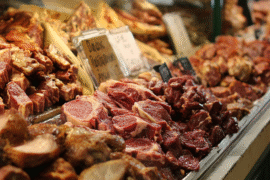This article may contain references to products or services from one or more of our advertisers or partners. We may receive compensation when you click on links to those products or services. Nonetheless, our opinions are our own.
Key Highlights
- A cash cow refers to a segment of a business that consistently generates revenue without necessitating substantial investment.
- These business units typically hold a high market share in slow-growing industries, leading to strong positive cash flows.
- Cash cows provide financial stability and funds that can be reinvested into other areas of the business.
- Identifying and maintaining cash cows is crucial for long-term growth and maximizing shareholder value.
- Examples of well-known cash cows include Microsoft’s Windows and Apple’s iPhone.
Introduction
In today’s fast-changing business landscape, understanding your company’s cash flows is essential for long-term success. Identifying “cash cows”—business units that generate more revenue than they consume—is a critical part of this process. These high-performing segments can help maintain market share and fund new opportunities.
Exploring the Concept of a Cash Cow
A cash cow is a business segment that consistently generates revenue with minimal ongoing investment. These units typically operate in mature industries where they maintain a strong market position. Properly managing a cash cow ensures steady income and financial security, enabling businesses to invest in innovation and expansion.
Definition and Importance in Business
The term “cash cow” originates from the Boston Consulting Group (BCG) matrix. It refers to a business unit or product that holds a high market share in a slow-growing industry, allowing it to produce substantial excess cash beyond its maintenance costs.
Cash cows play a pivotal role in maintaining a company’s financial health. Their strong positive cash flows can be used to:
- Expand other profitable business areas.
- Develop new products and services.
- Pay off existing debts.
- Distribute dividends and repurchase shares for investors.
Cash cows contribute to business longevity and strategic growth by serving as stable revenue sources.
How Cash Cows Differ from Other Business Units
The BCG growth-share matrix categorizes business units based on market growth rate and market share:
- Stars: High growth, high market share. These require significant investment to sustain expansion.
- Question Marks: High growth, low market share. They need strategic investment to determine if they can become stars or should be phased out.
- Dogs: Low growth, low market share. These often underperform and may be divested.
- Cash Cows: Low growth, high market share. These provide consistent profits with minimal investment needs.
Unlike Stars or Question Marks, Cash Cows thrive in stable markets and generate reliable income with lower resource demands.
Identifying a Cash Cow: What You Need to Know
Identifying a profitable aspect of your business enables you to make well-informed decisions. Beyond revenue generation, factors such as market positioning, competition, and financial health are key indicators.
Key Characteristics of a Cash Cow
To recognize a profitable investment, consider the following characteristics:
- High Market Share: Strong market presence allows control over pricing and distribution.
- Positive Cash Flows: Generates excess revenue beyond maintenance costs.
- Low Investment Needs: Operates in a stable market with established infrastructure, reducing expenses on advertising, research, and development.
- Potential for Dividends: Steady financial performance often enables consistent dividend payouts, enhancing investor confidence.
By focusing on these indicators, businesses can identify which products or services offer sustained profitability.
Signs Your Business Might Be a Cash Cow
- Consistently High Profits: If your business maintains steady profits with minimal new investments, it may be a cash cow.
- Strong Customer Loyalty: A dedicated customer base that remains engaged despite competition suggests stability.
- Excess Cash Reserves: Surplus cash beyond operational needs signifies robust financial health.
- Market Share Stability: Maintaining or growing market share in a mature industry indicates a strong position.
Beginner’s Guide to Nurturing Your Cash Cow
Once you’ve identified a cash cow, proper management ensures longevity and maximizes value. Strategic planning and efficient resource allocation are essential.
Preparing the Groundwork
Before optimizing a cash cow, ensure the following:
- Clear financial goals
- A structured strategy
- Comprehensive market research
- Sufficient resources
- An efficient management team
- Performance tracking systems
Key Steps to Managing a Cash Cow
Step 1: Analyzing Financial Health
A thorough financial analysis aids in evaluating the performance of a profitable venture. Important financial metrics include:
| Metric | Formula | Description |
|---|---|---|
| Gross Profit Margin | (Revenue – COGS) / Revenue | Measures profitability after deducting the cost of goods sold. |
| Current Ratio | Current Assets / Current Liabilities | Indicates ability to cover short-term obligations. |
| Inventory Turnover | COGS / Average Inventory | Evaluates efficiency in managing and selling inventory. |
Regularly monitoring these figures ensures financial stability and early detection of potential issues.
Step 2: Investing in High-Return Areas
While cash cows require less investment than high-growth segments, wise resource allocation is crucial:
- Maintain Market Share: Invest in branding, customer retention, and competitive positioning to sustain dominance.
- Improve Operational Efficiency: Streamline processes to reduce costs and enhance profitability.
- Pursue Low-Risk Growth Opportunities: Expand into complementary markets or product extensions to sustain revenue without excessive risk.
Strategic reinvestment guarantees that a valuable asset maintains its value over time.
Conclusion
Identifying and maintaining a cash cow is essential for long-term business success. Recognizing the characteristics of a cash cow allows businesses to allocate resources effectively, ensuring financial stability and sustained growth. Regular financial reviews help optimize performance, making cash cows valuable assets for business expansion. By applying these principles, businesses can maximize profitability and market strength.
Frequently Asked Questions
What Makes a Business a True Cash Cow?
According to the Boston Consulting Group (BCG) matrix, a cash cow is a business unit with high market share in a slow-growing industry. These businesses generate consistent revenue with minimal reinvestment, allowing companies to use the surplus for dividends or funding other divisions.
Can Any Business Become a Cash Cow?
Not all businesses have the potential to become profitable. The achievement of cash cow status is contingent upon various factors, including the market growth rate, competitive positioning, and operational efficiency. A well-executed strategy is crucial to developing a business unit with sustained positive cash flow.
How Do I Balance Investment Between Cash Cows and Other Business Units?
Use the BCG matrix to allocate resources wisely. Ensure cash cows receive enough investment to maintain market share while directing excess funds to high-potential units such as Stars and Question Marks.
What Are the Risks of Relying Too Much on a Cash Cow?
Relying excessively on a single source of income can pose significant risks. Market disruptions, competition, or industry changes can erode profitability. Businesses must diversify and innovate to mitigate risks.
How Often Should I Review My Business’s Cash Cow Status?
Regular reviews (every 3 to 6 months) help track cash flow, market conditions, and financial performance. Staying proactive ensures long-term stability and profitability.

Reviewed and edited by Albert Fang.
See a typo or want to suggest an edit/revision to the content? Use the contact us form to provide feedback.
At FangWallet, we value editorial integrity and open collaboration in curating quality content for readers to enjoy. Much appreciated for the assist.
Did you like our article and find it insightful? We encourage sharing the article link with family and friends to benefit as well - better yet, sharing on social media. Thank you for the support! 🍉
Article Title: Is Your Business a Cash Cow? Key Characteristics and Signs
https://fangwallet.com/2025/02/20/is-your-business-a-cash-cow-key-characteristics-signs/The FangWallet Promise
FangWallet is an editorially independent resource - founded on breaking down challenging financial concepts for anyone to understand since 2014. While we adhere to editorial integrity, note that this post may contain references to products from our partners.
The FangWallet promise is always to have your best interest in mind and be transparent and honest about the financial picture.
Become an Insider

Subscribe to get a free daily budget planner printable to help get your money on track!
Make passive money the right way. No spam.
Editorial Disclaimer: The editorial content on this page is not provided by any of the companies mentioned. The opinions expressed here are the author's alone.
The content of this website is for informational purposes only and does not represent investment advice, or an offer or solicitation to buy or sell any security, investment, or product. Investors are encouraged to do their own due diligence, and, if necessary, consult professional advising before making any investment decisions. Investing involves a high degree of risk, and financial losses may occur including the potential loss of principal.
Source Citation References:
+ Inspo











































